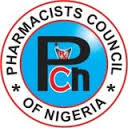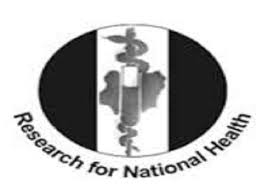As the world marks the 2025 World Sickle Cell Day, Nigeria finds itself at a critical juncture in the fight against one of its most persistent public health challenges. Despite global advances in care and treatment, Nigerians living with sickle cell disease (SCD) continue to suffer under the weight of high treatment costs, limited access to curative options, and systemic healthcare shortfalls. Survivors, caregivers, and health professionals are calling for urgent reforms, increased funding, and equitable healthcare policies to stem the tide of preventable deaths—particularly among children.
Nigeria bears the highest burden of sickle cell disease globally, with an estimated 100,000 babies dying each year before their fifth birthday. The disease, inherited when both parents carry the sickle cell trait, turns everyday life into a constant battle of pain, hospital visits, and emotional distress. Despite being preventable and increasingly manageable, many children born with the condition are never diagnosed early enough due to the lack of universal newborn screening. Ignorance, misinformation, and poor access to healthcare continue to cost lives.
The financial burden of SCD care in Nigeria is immense. Bone marrow transplants—the most accessible curative treatment in-country—cost between $35,000 and $50,000, a staggering sum for most families. Gene therapy, the latest frontier in SCD treatment, remains beyond reach. While celebrated Nigerian-American patient Jimi Olaghere was cured through a CRISPR-based procedure in the U.S., his therapy cost $2.3 million. Such life-changing treatment is inaccessible to most Nigerians, raising calls for locally adapted, affordable alternatives.
In recent years, Nigeria has made commendable strides. The federal government has introduced universal newborn screening and established six SCD centres across the country. A partnership with a local pharmaceutical company now allows children better access to hydroxyurea, a drug proven to reduce pain episodes and hospital visits. In 2024, a major milestone was achieved when doctors at the Lagos University Teaching Hospital (LUTH), in collaboration with the Sickle Cell Foundation of Nigeria, successfully performed Nigeria’s first bone marrow transplants. Two patients, one a child and the other an adult, are now recovering well, offering hope that curative care is possible within Nigeria’s borders.
Still, the road ahead is daunting. With fewer than 100 haematologists in the country—many of whom are leaving due to the “Japa” brain drain—the capacity to manage SCD comprehensively is critically low. Treatment options remain out of reach for the majority due to the exclusion of SCD from the National Health Insurance Scheme. Most patients rely on out-of-pocket payments, and support for indigent cases is minimal.
Experts such as Prof. Obiageli Nnodu, Director of Nigeria’s National Centre of Excellence for Sickle Cell Disease Research, are pushing for deeper integration of gene therapy into the national treatment framework. She warns that despite recent progress, ignorance about SCD’s genetic transmission and available interventions remains high, even among healthcare professionals. In many communities, parents reject screening results because the baby “looks healthy,” only to face tragedy later.
Dr Seye Akinsete of LUTH, who led the transplant project, affirms the potential of curative treatment but acknowledges that data on success rates in Nigeria is still scarce. Globally, bone marrow transplants boast a 90% survival rate. In Nigeria, the first two patients post-transplant are doing well, showing no signs of acute crisis or complications. Yet, treatment costs remain high because all medical materials must be imported, making affordability a major hurdle.
Additional voices in the SCD space, such as Dr Folasade Adelekan-Popoola and Prof Titi Adeyemo, emphasize the broader challenges: lack of modern equipment like apheresis machines, inadequate government funding, and insufficient patient support. Adelekan-Popoola notes that severe SCD cases require frequent admissions and advanced procedures, yet most patients cannot afford the care. She calls for national investment in genetic counselling and expanded insurance coverage.
International collaborators like Prof Jennifer Adair and Dr Alexis Thompson are also advocating for the integration of gene therapy in high-burden countries like Nigeria. Adair points to Nigeria’s leading role in the global SCD burden and stresses the urgency of building the legislative and administrative capacity to deliver gene therapy nationally. Thompson, who led haematology efforts at the Children’s Hospital of Philadelphia, cautions that while gene therapy is life-changing, it comes with trade-offs—infertility risks, infections, and cancer in rare cases. Not all patients qualify, but early diagnosis can increase eligibility.
Ultimately, this World Sickle Cell Day is both a moment of reckoning and renewed hope. Nigeria is inching toward transformation in SCD care, but the pace must quicken. Public education, healthcare investment, genetic counselling, and the full integration of curative treatments into health policy are no longer optional—they are urgent imperatives. For the tens of thousands living with sickle cell disease in Nigeria, the dream is simple but profound: a life free from pain, crisis, and stigma. The tools are within reach, but political will, funding, and commitment must follow.





